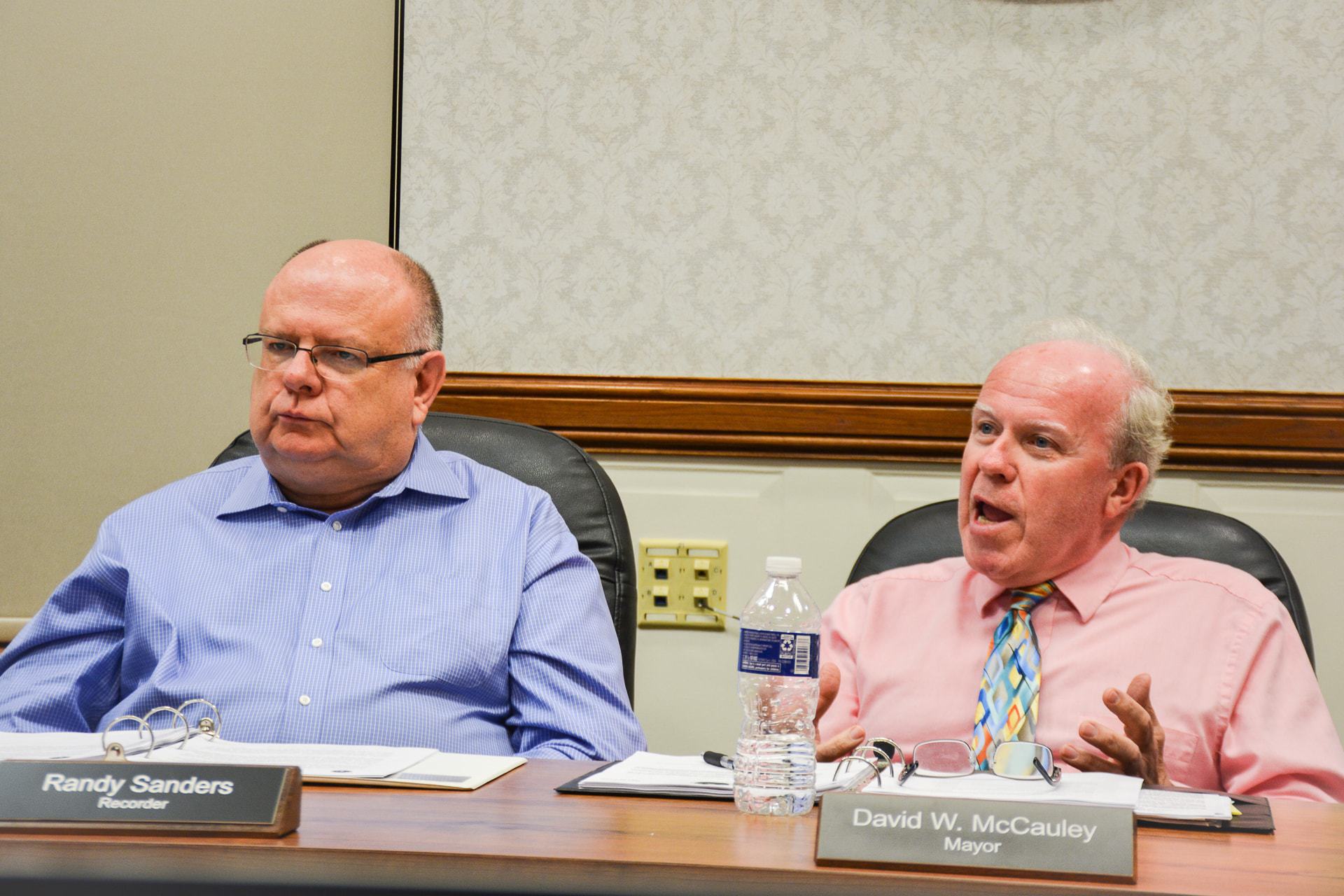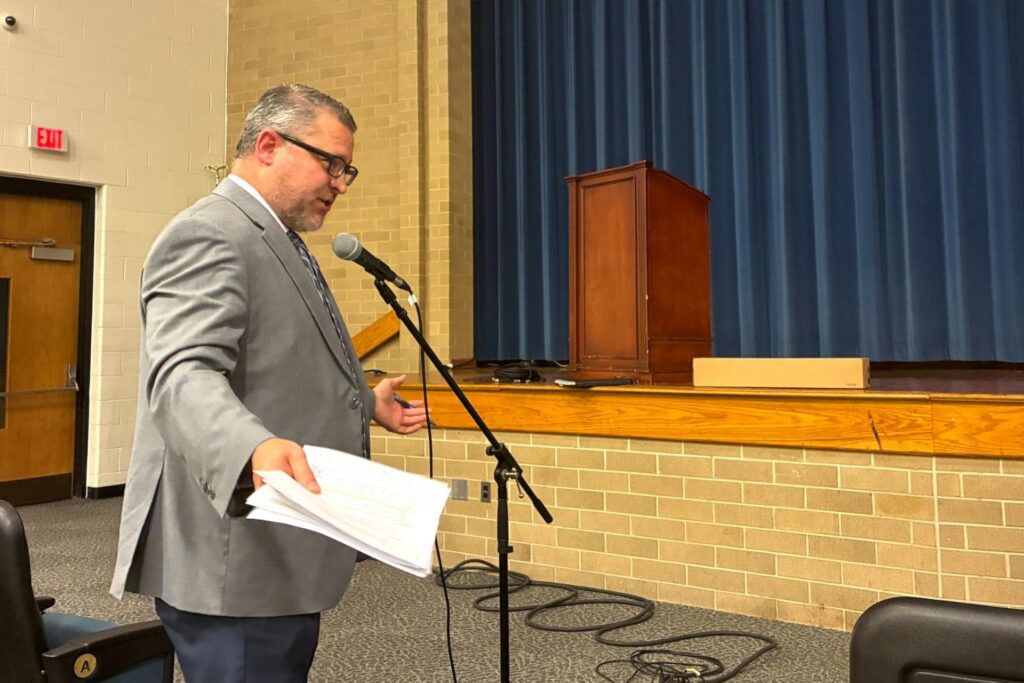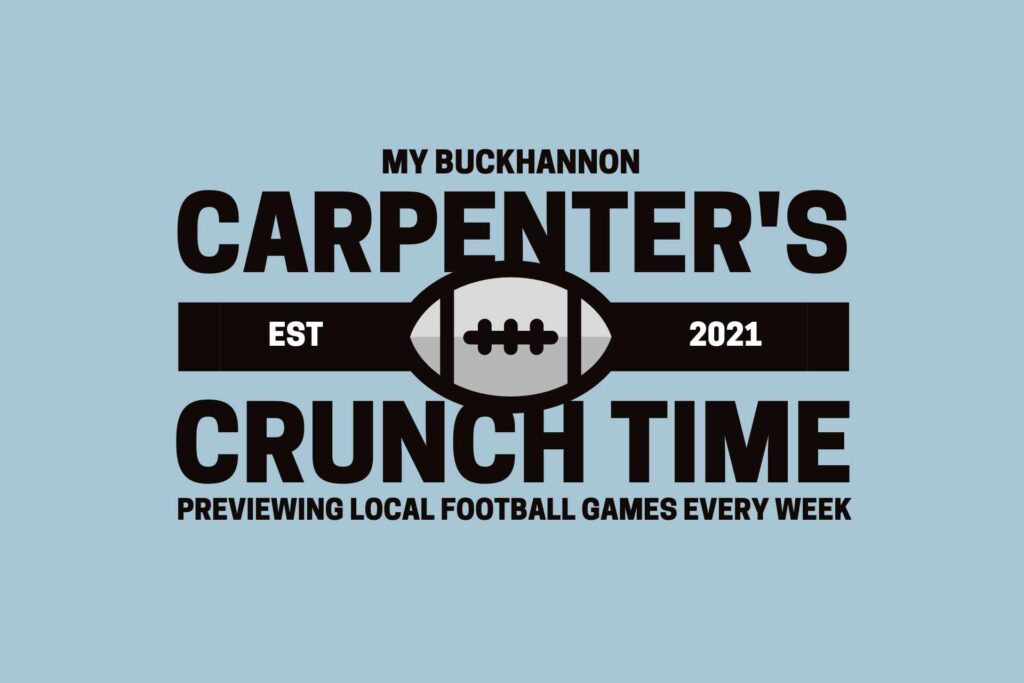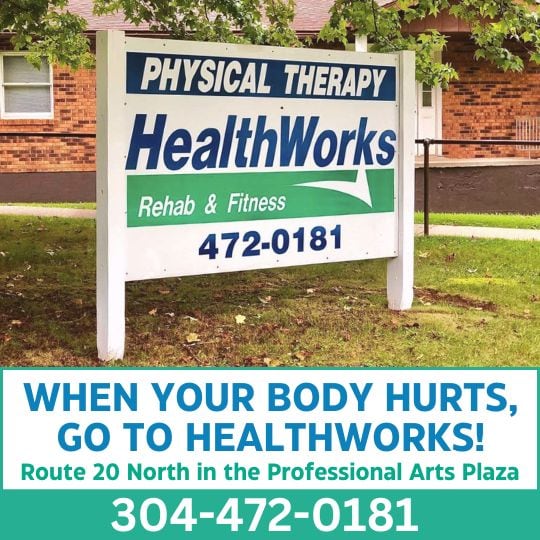BUCKHANNON – Buckhannon’s fire chief last week urged city council to pay a stipend to volunteer members of the Buckhannon Fire Department who already meet departmental training requirements rather than hire a part-time firefighter to supplement coverage needs.
For several months, the City of Buckhannon has been discussing applying for permission to amend its Home Rule Plan through the West Virginia Municipal Home Rule Board to permit the hire of part-time firefighters.
However, at council’s most recent meeting Thursday, Oct. 3, Chief J.B. Kimble said creating a part-time position could create tension within the BFD.
But mayor David McCauley and city finance and administrative director Amberle Jenkins said they had questions about the legality of the stipend proposal from a civil service and administrative standpoint.
A part-time position?
Currently, the city can’t hire part-time firefighters due to West Virginia Civil Service restrictions and protections – that is, unless Buckhannon’s Home Rule plan is revised to permit it.
At the Oct. 3 meeting, Kimble presented an alternate model to a part-time position which would entail any volunteer member of the BFD in good standing being paid a stipend for a shift of four hours or more. The model stipulates that the coverage provided by a firefighter receiving the stipend would be in addition to – and not a substitute for – regularly scheduled hours of the city’s full-time paid (or career) firefighters.
Kimble said although he’d worked with city attorney Tom O’Neill to craft the part-time firefighter position description, career and volunteer firefighters in the department had since highlighted several concerns about the part-time position.
“We came up with several cons that we were concerned about, and one of them I spoke about before – the negative impact on our ISO rating if whoever does this position doesn’t get the adequate training as they work, that will have a negative impact,” Kimble said.
The ISO, or Insurance Services Office, assigns fire departments ratings based on how well-equipped they are to put out fires; the lower the rating, the better. The rating, in turn, affects the cost of homeowner’s insurance. Kimble said he was concerned about a part-time firefighter not meeting the 10-20 hours of required training per month and potentially detrimentally affecting the BFD’s ISO rating.
“Basically, we already have the trained people that are providing the hours to cover each shift that we need for our events,” he said, noting the department has 17 active volunteers. “The volunteers are already part of our organization. We’re a family, and they feel that they can provide this coverage, and with this model the city could provide them a stipend based on their training level.”
Kimble also said the introduction of a stipend model could enhance recruitment and retention of volunteers.
“This is the first time in West Virginia that this has been looked at, that we know of – paying a stipend for four-hour blocs for our volunteers,” the chief said. Kimble said volunteer members of the BFD already provide approximately 300-400 hours of coverage annually and paying a stipend to volunteers wouldn’t require the city to amend its Home Rule Plan.
“It would create a lot less work for Tom and for everybody. We think that’s a win-win situation; we’d be giving them something actually for what they’re providing for us,” Kimble said.
Hourly wages versus stipends
However, McCauley said he had questions about the legality of the proposal.
“Are we convinced this stipend model has been approved by the state of West Virginia?” the mayor asked. “Civil service is awfully tight. We know that when we went through this police exercise to come up with a model that allowed us to hire (part-time Buckhannon Police officer) Tanner Collins, that at that juncture, the only way we could effect the part-time hire of anyone was to go through the Home Rule Board.”
O’Neill said he wasn’t currently aware of any illegality.
“I’m not aware that it’s unlawful … I don’t know that it’s not permitted,” he said. “I guess what I’m unclear about is, what is the difference between that (stipend) proposal and hiring part-time firefighters?”
Kimble said while the city would be mandated to pay a part-time firefighter an hourly wage, stipends paid for additional coverage would be based on a bloc of hours. They’d also be paid at a rate that was just a fraction of the hourly wage of a paid career firefighter – usually 20-30 percent.
“The people that are already there, they go to our training,” he said. “We’ve trained them already. We’re not going to be paying them to train and then they go get a job somewhere else. That was one of the downfalls of a part-time person.”
‘A wrench in our system’
Kimble said he would prefer to pay a stipend to an individual who already had ownership in the BFD.
“Our career and volunteer organization is working like a gear,” the chief said. “The fear is, if somebody comes in part time that does not have ownership in our organization and they leave and go home [to another city], it’ll be a wrench in our system.”
O’Neill suggested the department hire a part-time person from its pool of volunteers.
“I guess what I’m saying is, why can’t we just hire those same volunteers as part-time firefighters versus the stipend model?” the city attorney asked.
Kimble said the creation of the position could deter or disincentivize volunteers.
“Some of the negatives I got from the volunteers were, if you’re going to hire a part-time person to cover what we’re already covering, why would we help you cover it then?” he replied.
Kimble said the stipend would pay firefighters for pre-planned time worked alongside paid career staff. The chief said a firefighter paid by stipend wouldn’t be a substitute – but rather an addition to – career firefighters.
“We have an event coming up, and I need an additional person for four hours,” Kimble said. “[A firefighter paid via stipend] is not substituting or taking anybody’s position. He is an addition. That’s where the concern comes from, from the career staff. This is started out as an addition, and then the verbiage changed to, ‘hey when [a certain firefighter’s] off, this person could be working. We are going to create friction within our organization that we really don’t need.
“You’re saying that if somebody got hurt, a part-timer would take the place of a full-time person,” Kimble added. “I whole-heartedly feel that that would create a lot of friction among our career staff.”
Questions about legal and administrative aspects of stipends
McCauley, who served as the city’s attorney for more than 30 years prior to being elected mayor, said he was hard-pressed to see how paying stipends to volunteer firefighters would be legal.
“After 37 years of practicing [law] in civil service, I am going to have to be convinced that this stipend thing holds legal water under state statute because it runs afoul and contrary to everything we’ve ever talked about,” he said. “Otherwise, we wouldn’t have had to go through the Home Rule Board to hire a part-time police officer. The only way we could effect that was because we were a Home Rule city. It just doesn’t seem right to me.”

Not only would a part-time firefighter position create the opportunity for retired firefighters to work a few shorter shifts with the BFD, it could also be used to develop a pool from which to pick candidates should the department be awarded the SAFER or Staffing for Adequate Fire and Emergency Response grant through the Federal Emergency Management Agency.
If received, the grant would provide money to fund three additional full-time firefighter positions over the next three years.
“We’ve hired 18 firefighters in 18 year; we’ve hired 22 police officers in 22 years, so the point is that once a year, we go through this process,” McCauley said. “Wouldn’t it be great if, for the first time ever, we had a pool ready to train those ppl into those first responder positions instead of going back to the drawing board each time …?”
The SAFER grant
Since city council members authorized the SAFER grant application in March 2019, some have expressed concern over how to fund three full-time firefighter positions once the grant runs out after a three-year period. Kimble has previously stated that if the city is awarded the FEMA grant and accepts it, a part-time firefighter would likely not be needed.
But at the Oct. 3 meeting, McCauley questioned whether the city can afford to accept the grant and commit to paying three additional firefighters when the grant expires. (Information coordinator and grant writer Callie Cronin Sams had expected to be notified in September whether the city had received the SAFER grant but as of this week, has yet to hear.)
“I was told volunteerism is down … if we have an overabundance of volunteers ready to step up, why in the world would we apply to add three full-time firefighters at a cost in three years of about $300,000 to this city?” McCauley questioned. “Why are we looking at that model?”
Kimble said the fire department had applied for the grant to shore up holes in its service discovered through the department’s accreditation process.
“Because you’ve asked us to become accredited and we’re finding faults in our service that we don’t have enough staff for the fire [service] load that we provide,” Kimble answered.
“But wouldn’t adding these part-time trained firefighters – would that not add accreditation [efforts]?” the mayor asked.
Kimble said the reactive nature of the fire service means he’s unable to schedule a part-time person to work at ideal times because of his inability to predict the future and know when a fire’s going to break out.
“If I could tell you when we’re going to have a fire that would be perfect, but I can’t do that, sir,” Kimble said. “I can’t tell you when we’re going to have a fire, whether it’s going to happen at three o’clock in the morning or three o’clock in the afternoon.
“It’s the reactive nature of it,” he added. “For example, you have the structure fire at Aggie Hall, and you go over there, and you’ve got a fire on the fourth floor, and you’ve only got two people – that’s where you have a problem. I can’t plan that fire; I can’t plan to have that staffing.”
‘We can’t just pay someone money’
In the end, McCauley asked O’Neill to return at council’s Oct. 17 meeting with an opinion on the legality of a stipend – as well as how it would work from a payroll perspective.
“I’ve described this as an extra tool for the toolbox from the very beginning,” McCauley said. “What I’d like for Tom to do is to check on the legitimacy of this stipend notion between now and the next meeting, if you could give us an opinion on that.”
Jenkins, the city’s finance director, said she had a question the stipend method.
“I’ve been on the other side of IRS with payroll, and we can’t just pay someone money without them being on our payroll … they have to be on our payroll if they’re using our facilities, we are directing them and they’re using our equipment … so that’s one question I have,” she said. “I’d like that to be clarified so I’m not on the other end of IRS explaining why we’re violating IRS rules with payroll.”
McCauley said council would hopefully have answers Oct. 17.
“The other element of all this, when we think about the SAFER grant, I have to tell you, J.B., until I see a financial model that is going to support that nearly $300,000 a year, where’s that money going to come from? Are we going to advance the first due fee?” he asked.
Kimble said three additional people would cost $174,000 – not $300,000, and that the extra annual expense would amount to $144,000 because the city would save about $30,000 a year on overtime by employing three additional career firefighters.
Councilman CJ Rylands said if the city accepts the SAFER grant, instituting a first due fire fee is inevitable.
“I think we’re setting ourselves up, when that decision comes, I think we are agreeing to a first due fire fee at the end of the three-year period,” Rylands said.
The rules of Home Rule
O’Neill noted the city is facing a tight deadline, should it wish to have the Home Rule Board take up the part-time firefighter amendment at its next meeting in January 2020. Specifically, a public hearing would need to be held on the amendment at council’s Nov. 7 meeting.
The city attorney said Nov. 7 would also be when council would be mandated to consider on first reading a two-reading ordinance that would authorize the amendment to plan. The ordinance would theoretically take effect in December and then the Municipal Home Rule Board would vote it up or down at its January 2020 meeting.
Then, a second two-reading ordinance implementing the change would have to pass two readings before the city could hire a part-time firefighter, at the earliest, in the first half of March 2020, O’Neill said.













